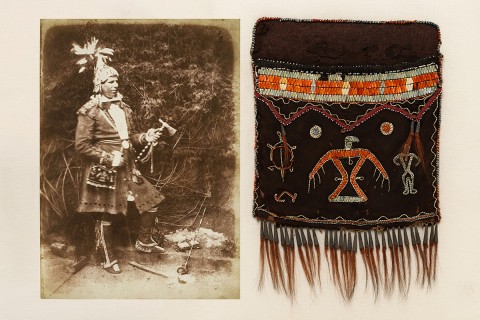The creative resistance of Native American Christian art
The Christian Thunderbird is once more taking flight.

When the Ojibwe minister Kahkewaquonaby, aka Peter Jones (1802–1856), converted to Christianity, he aligned himself with the Thunderbird, seen on the bag he is holding in the oldest surviving photograph of any Indigenous North American. The Thunderbird is among the most powerful spiritual beings in Anishinaabe cosmology, a force against evil with a special, protective relationship to the Anishinaabe people.
In a time when Native Christians sometimes felt compelled to abandon their culture as a survival strategy, the Thunderbird was an indigenous symbol that Jones refused to discard. On his sacred bag, made by an anonymous Anishinaabe woman out of tanned leather, porcupine quills, dye, glass beads, metal cones, and deer hair, the iconic bird stands erect with wings outstretched to the east and west in cruciform. The photograph is now in the permanent collection of the Metropolitan Museum of Art in New York.
Relegated to a backroom gallery of the Science Museum of Minnesota are an Ojibwe altar cloth that displays the word wakan (holy) and a head vestment of Dakota convert Andrew Good Thunder. As if to emphasize the continuity of Ojibwe life before and after Christianity, the beadwork is displayed adjacent to a 13th-century ceramic vessel that features the Thunderbird.




